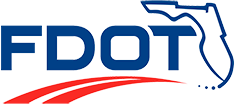Executive Summary
The purpose of this study is to determine what enhancements can be programmed to improve traffic spillback onto I-95, interchange operations, reduce congestion and improve safety at the I- 95 at Martin Luther King Jr. Parkway (MLK) interchange location. Improvements are aimed at increasing the efficiency of I-95, MLK and interchange ramps.
The primary need of the project is to improve existing and future traffic conditions thereby improving safety at the interchange. The interchange of I-95 at MLK is a partial cloverleaf interchange providing full access. It is an important component of the Strategic Intermodal System (SIS) providing access to the City of Jacksonville.
If no improvements are made to the interchange, traffic operations and safety within the interchange area will continue to deteriorate as traffic volumes increase.
A Methodology Letter of Understanding (MLOU) was prepared to document the methodology for the analysis and evaluation of this IMR. The primary basis for traffic projections in this Interchange Modification Report (IMR) are existing field traffic counts and the latest version of Northeast Regional Planning Model-Activity Based 1v3 (NERPM-AB1v3) with base year 2010 and horizon year 2040. The analysis years for this study include Existing Year 2017, Opening Year 2025 and Design Year 2045. The operational analysis for this study was performed using the Highway Capacity Software (HCS 7) and Synchro 10.0. All operational analysis followed the guidelines of the Highway Capacity Manual (HCM) 6th Edition.
Two additional lanes are being added in northbound and southbound directions as part of the I- 95 Managed Lanes Planning Study for I-95 from I-10 (SR 8) to the Florida/Georgia State line. This proposed mainline improvement was assumed to be part of the No-Build Alternative. Two alternatives were evaluated to address the purpose and needs identified for this project. These include the No-Build Alternative and Build Alternative. Transportation Systems Management and Operations (TSM&O) improvements include implementation of non-capacity improvements to improve traffic flow within the project area. The Build Alternative developed for this IMR incorporates TSM&O improvements. The Build Alternative’s primary improvements include:
- Elimination of the loop ramp in the northwest quadrant of the MLK interchange
- Signalizing all movements at the I-95 Southbound On/Off-ramps terminal intersection,
-- Provide two westbound left turn lanes
-- Provide two eastbound to southbound right turn lanes
- Signalizing the I-95 Northbound On-Ramp intersection
-- Provide two eastbound left turn lanes
-- Provide one westbound right turn lane with one westbound shared through and right turn lane
- Extension of the deceleration lane for the I-95 Southbound Off-Ramp to MLK Eastbound and I-95 Northbound Off-Ramp to MLK Westbound
- Repositioning of the I-95 Southbound Off-Ramp to MLK Westbound
As part of this study, an existing crash analysis was performed. The data provided from FDOT State Safety Office Map Based Query Tool (SSOGis) shows along I-95 and MLK rear end crashes, sideswipe and angle crashes are the most prominent crashes within the project area.
The recommended alternative shows improved traffic operations and safety within the project study area when compared to the No-Build Alternative due to reduction in congestion and improved geometric design to improve safety.
Based on the evaluations of the No-Build and Build Alternatives, the recommended alternative, for approval in this study, is the Build Alternative. The recommended alternative will incorporate viable TSM&O improvements and will be developed further as the Project Development and Environment (PD&E) study progresses.
This IMR has been developed in accordance with the FDOT Policy No. 000-525-015: Approval of New or Modified Access to Highways on the Strategic Intermodal System (SIS), FDOT Procedure No. 525-030-160: Approval of New or Modified interchange access to limited access facilities on SIS, Interchange Access Request User’s Guide (IARUG) and the FDOT Traffic Forecasting Handbook (Procedure No. 525-030-120).
Purpose and Need
Download the Purpose and Need (PDF, 621.1KB)
The purpose of this study is to complete an IMR to determine what improvements can be programmed to improve traffic spillback onto I-95, interchange operations, reduce congestion and improve safety at this interchange location. Improvements are aimed at increasing the efficiency of I-95, MLK and I-95 ramps. The primary need of the project is to improve existing and future traffic conditions thereby improving safety at the interchange. The interchange of I-95 at MLK is a partial cloverleaf interchange providing full access. It is an important component of the SIS providing access to the City of Jacksonville. Recent traffic projections completed in the region identified increased traffic operations and potential operational deficiencies in the vicinity of the study interchange.
Currently in the existing year 2017, I-95 south of MLK is carrying approximately annual average daily traffic (AADT) of 128,900 vehicles and I-95 north of MLK is carrying an approximate AADT of 131,000 vehicles. By year 2045, the AADT along I-95 is expected to increase to 160,600 vehicles daily south of MLK and 165,000 vehicles daily north of MLK. The MLK Northbound On-Ramp to I-95 carries high traffic volume in excess of 17,000 vehicles which is anticipated to exceed 22,000 AADT by year 2045. The operating conditions at the interchange are expected to deteriorate with the projected increase in traffic.
Travel Time Savings
Please download the study report to obtain this information.
